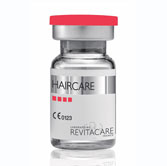
HAIR TRANSPLANT AND SCALP MICROPIGMENTATION Q & A
Hair transplant and scalp micropigmentation go hand in hand together. Many of our SMP clients were previous hair transplant clients who come to do scalp micropigmentation for a number of reasons.
- to camouflage their FUT or FUE scars in the back of the head.
- to add more density to a hair transplant that does not have enough coverage.
- to redo the entire scalp due to the hair transplant not looking good or is too sparse.
If you are contemplating on doing hair transplant or scalp micropigmentation, why not give us a call. We deal with many reputable hair transplant doctors that we can recommend, or give you advice on doing both scalp micropigmentation and hair transplant or just SMP alone.
Yes, scalp micropigmentation can be done before or after a hair transplant procedure. The SMP does not affect the hair transplant in any way. SMP can be done anytime before a hair transplant. However, you should wait about 3 months after a hair transplant to do SMP.
There are pros and cons to both hair transplant or micropigmentation. Not everyone is a good candidate for hair transplant. If you do not have enough donor hair, your hair transplant results will look sparse and unfinished. Hair transplant also creates FUE scarring or FUT scarring in the back of your scalp. So if you are planning to keep your hair very short, then these scars will be noticeable.
Scalp micropigmentation only gives you the illusion of hair, as the process is done with tiny ink pigments placed strategically into the scalp. So whether you have or don’t have enough donor hair for a hair transplant, you can still do SMP.
There has been thousands of people who have done this treatment worldwide. His Hair Clinic was the first to do the procedure in the UK 20 years and we are pleased to be trained by the best.
Yes, scalp micropigmentation is an afordable alternative to hair transplant. Not all patients are suitable candidates for hair transplant but almost everyone can do scalp micropigmentation.
Why scalp micropigmentation works because it gives the illusion of real hair follicles even at close range. If done well, people cannot tell the difference between your shaven hair and SMP.
At Hairtattoo.ca we do 3 to 4 sessions, spaced 1 to 2 weeks apart.
There is no cure for baldness, so once you become bald, there are only a few alternatives to help you regain the look of your hair back, hair transplant, scalp micropigmentation, and hair systems (wigs and toupees).
Micropigmentation is the art of placing tiny ink pigment into your scalp to mimic the look of real hair follicles. Scalp micropigmentation is this treatment done on your scalp. We also offer facial micropigmentation for patients who want to do miropigmentation on their beard or mustache.
The price will vary depending on the amount of coverage done. We can give you a free estimate either online or at one of our SMP clinics.
It all depends on the donor area and if you have enough donor hair (the hair on the back and sides that isn’t affected by androgenetic alopecia). Some patients bald more than others, and depending on the extent of the balding, some patients may not have enough donor hair to do a successful hair transplant.
SUT implantation is a new hair transplant method compared to other hair transplants such as FIT and FUT. In the SUT implantation, the follicles are not manually removed and transplanted, they will be separated by a laser punch from the donor site, which is usually the back of your head, and then frozen and eventually transferred to the bald areas. Due to the freezing of hair follicles, they are prevented from being destroyed until they’re implanted. In the SUT method, due to the existence of a laser punch and the freezing system, a very small percentage of hair roots are lost during
harvesting and transplanting.
FUE, which stand for Follicular Unit Extraction, is where each individual donor hair is taken, or harvested from the back and sides of the head.
FUT, also known as strip method, stands for Follicular Unit Transplantation. In the FUT method, an area of tissue is taken from the back and sides of the head, and then the individual hairs, or follicular units, are removed from the strip and transplanted to the scalp.
Both methods are popular, so there are both pros and cons to both procedures.
The primary benefit of FUT is that it gives a higher amount of hair follicles to harvest compared to FUE. So for a patient who has a smaller donor area, this procedure may be the better option.
The primary benefit of the FUE method is that it doesn’t create a long scar at the back of your head. Instead, the scars look like individual dots of missing hair where the harvested hair follicles were taken.
It depends on the skill of the hair transplant surgeon. But yes, the majority of FUE hair transplant achieves good results and does look natural. Natural results will be determined by where the surgeon places your hairline, as a low hairline on an aging person may not look too natural. Also the density of the hair transplant will affect whether the scalp looks natural or not.
Yes, micro scalp pigmentation is a very safe, non-invasive procedure. Unlike hair transplant, there is no surgery involved. There is also no downtime and you can go abouts your daily routine after the SMP procedure.
No, hair transplant is not suitable if you have alopecia areata where your donor hair is also lost. Hair transplant is only suitable for androgenetic alopecia where you still maintain your side and back of the head hair. The hair on the donor area usually does not fall out and therefore suitable to be harvested and transplanted in the front of the scalp.
Most patient who are starting to lose their hair will experience hair loss in the frontal hairline and the crown in the back of the head. The pattern resembles a horseshoe. So hair transplant can be done in these areas, but remember, as you continue to lose your hair, other areas of your scalp will be affected, and you may not have enough donor hair to cover it all.
It depends on how you keep your hair, long or short. If you plan to keep it like a buzz cut, then both FUE and FUT scars will be visible. FUE scars are less noticeable and you can keep your hair a little longer. Fortunately both types of scars can be covered by scalp micropigmentation, so if you do keep your hair very short, SMP can help hide the scars.
Often FUE is promoted as the “scarless” hair transplant, you do see the tiny areas of the scalp where each hair follicle was taken out. If you keep your hair very short, then FUE scars are still visible.
Yes, many women and men who want to keep their hair long can do scalp micropigmentation. The purpose of doing scalp micropigmentation on long hair is to add density to the hair. SMP is not suitable to recreate a new hairline if you plan to keep your hair long. It is only suitable to place the dots between the existing hairs to make it look denser and fuller. Women hair loss is a diffused hair loss, unlike men who have a horseshoe pattern. Because of this, scalp micropigmentation is suitable for women to add fullness to their thinning hair.
No, a totally bald person is a person who has a total hair loss condition such as alopecia totalis where the whole heads hair, including eyebrows are lost. There is no donor hair to harvest from.
The FUE method will take hair follicles from the back of your head. If you have enough donor hair, your head should not look bald. But if you shave your head, or have a buzz cut, then you will notice the some bald patches on the sides and back of the head.
On average you will need between 4000-6000 grafts for a full head hair transplant.
FREE ONLINE HAIR LOSS ASSESSMENT FORM
Are you experiencing any hair loss or scalp issues? Get a Certified Trichologist to assess and help treat your condition in Toronto and Greater Toronto Area. Please complete our online Trichology Assessment Form to get started now.
Comments are closed.
















